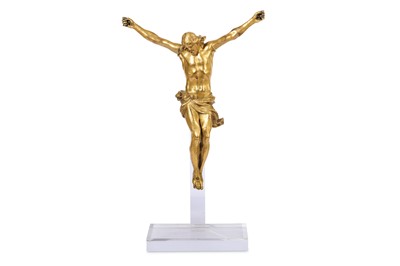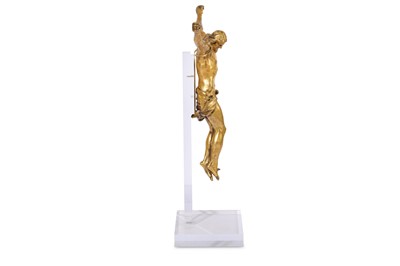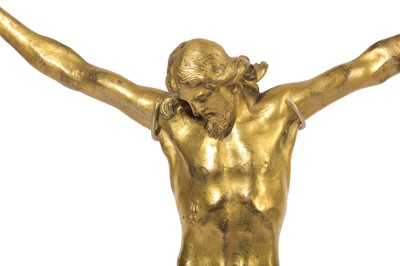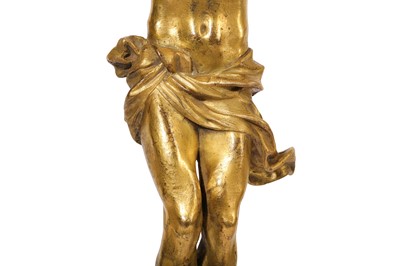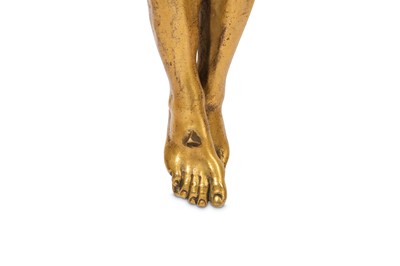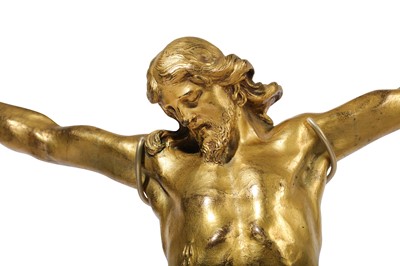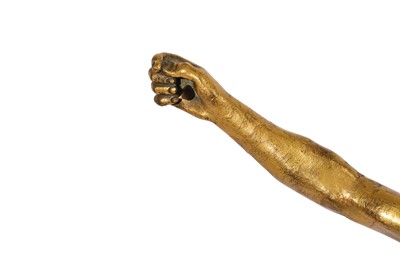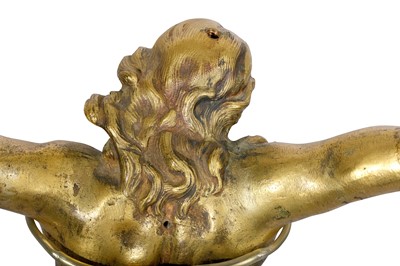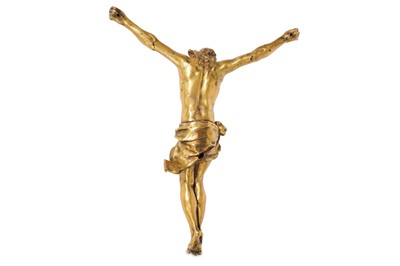12th Dec, 2019 10:00
Fine European Works of Art & Clocks
WORKSHOPS OF GIANLORENZO BERNINI (ITALIAN, 1598-1680): AN IMPORTANT THIRD QUARTER 17TH CENTURY ROMAN GILT BRONZE FIGURE OF CRISTO MORTO he Corpus Christi wearing a flowing perizonium, his eyes closed and head down-tured, later mounted on a perspex stand, 43.5 cm. / 17 ¼ inches high PROVENANCE: European private collector, London; By whom gifted to the present private collection, England RELATED LITERATURE: Roberto Battaglia, Crocifissi del Bernini in S. Pietro in Vaticano, Rome, 1942; Rudolph Wittkower, Gian Lorenzo Bernini, The Sculptor of the Baroque (London: Phaidon, 1966), pp. 229-30, fig. 79 WITH THANKS TO DR CHARLES AVERY FOR HIS ASSISTANCE WITH CATALOGUING THIS LOT. This fine gilt bronze figure of the dead Christ crucified on the cross (Cristo morto) is related to two crucifixes of the dead and living Christ, which in 1657 Pope Alexander VII Chigi (1655-67) commissioned Bernini to produce in order to decorate the side aisle altars of St Peter’s. Twenty-three of these crucifixes are still in situ at St Peter’s today on their original crosses, eighteen of the living version (Cristo vivo) and five of the dead Christ. Although the original model for the Cristo morto (presumably a drawing or terracotta figure) was made by Bernini, documents published by Roberto Battaglia in 1942 (op. cit.) reveal that the wax models for the crucifixes were made in 1658 by his studio assistant, the sculptor Ercole Ferrata (1610-86), and then, under Bernini’s supervision, cast in bronze twenty-five times by the specialist founder Paolo Curieri, after which each figure was individually chased and finished by Bortolomeo Cennini. At the end of 1660 the casts for St Peter’s were finished; the moulds for both types of crucifix, however, are listed in the inventory of Ferrata’s studio after his death (see Wittkower, p. 229), so it is possible that some casts were produced after 1660, for other patrons.The present bronze is clearly based on the same model as the Cristo Morto crucifixes in St Peter’s (see fig. 1 and detail), exhibiting the same down-turned emaciated head, with sharp brows and a long chin ending in a pointed beard, long arms extending above the head, thin torso with a gushing, bleeding wound on the right side of His chest, and wearing a windswept loincloth (perizonium) swirling in a downward direction to His left. Like the present bronze, all of the crucifixes in St Peter’s, as well as several other casts based on the same model, measure approximately 43.5 centimetres. The casting and finishing, however, differ from piece to piece, which lends each figure its individual character. According to Wittkower, (op. cit., p. 229) Bernini often eschewed pronounced anatomical details in favour of the ‘tense energy’ and ‘vitality’ which can be seen in an earlier model he made of the Cristo morto, the large crucifix for King Philip IV of Spain (c.1654: Escorial, Sacristy of the Colegio, fig. 3). Indeed, other contemporary bronze figures made in Bernini’s Roman workshops, such as the Countess Matilda of Tuscany (c.1634: Melbourne, National Gallery of Victoria) and the Risen Christ (c.1673-74: Walters Art Museum, Baltimore, fig, 4), also exhibit a lack of concern for minute anatomical detailing, for Bernini was a sculptor by training and not a small bronze specialist or goldsmith. This, together with the fine gilding and appropriate age-related wear, lead to the conclusion that the present figure is likely to be a contemporary cast based closely on Bernini’s original design, made in his bronze workshops in Rome in the third-quarter of the seventeenth century.
Sold for £7,500
Includes Buyer's Premium
Do you have an item similar to the item above? If so please click the link below to submit a free online valuation request through our website.

